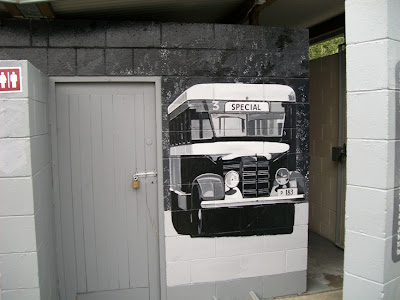On the way to visit a friend, I spotted this from the bus as it headed along Dominion Road, just past the intersection with Richardson Road. My friend was kind enough to drop me round after lunch to take some shots for the blog.
This is another of Louis Statham's artworks for local Community Board/Council projects, and features public transport in the early days of the district. A great touch is the inclusion of a piece of interpretive information, all part of the complete work.
So ... below is one of Roskills late 1920s community buses. These provided a link for residents in Roskill South with the tramlines north of Mt Albert Road. Some community bus services werre illegal, and ran in opposition with the then-Council contrlled trams all the way into the city. For a while, they got around the regulations by not charging fares, but instead encouraging "membership subscriptions" on a voluntary basis, so they could say they were simply providing a service for members, not the general public. It was a dodge which didn't last long in the courts.
Three Greenline buses which ran (according to the info) between Pt Chevalier to Otahuhu via Mt Roskill.
And ... a Dominion Road tram.
If you're in Auckland and haven't seen this before, stop by the Roskill South shops, and walk down the Richardson Road hill to spend a penny and take a look at this really quite marvellous piece of Auckland transport history.
























































